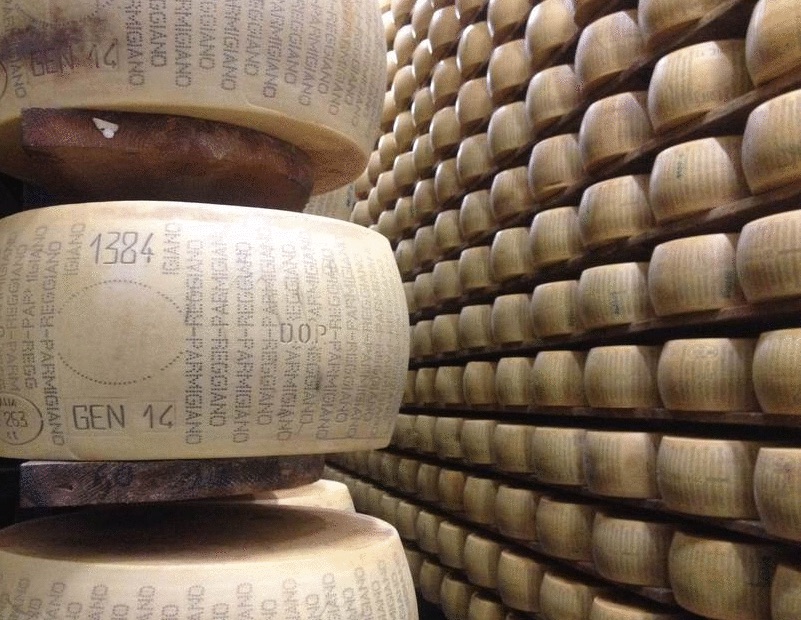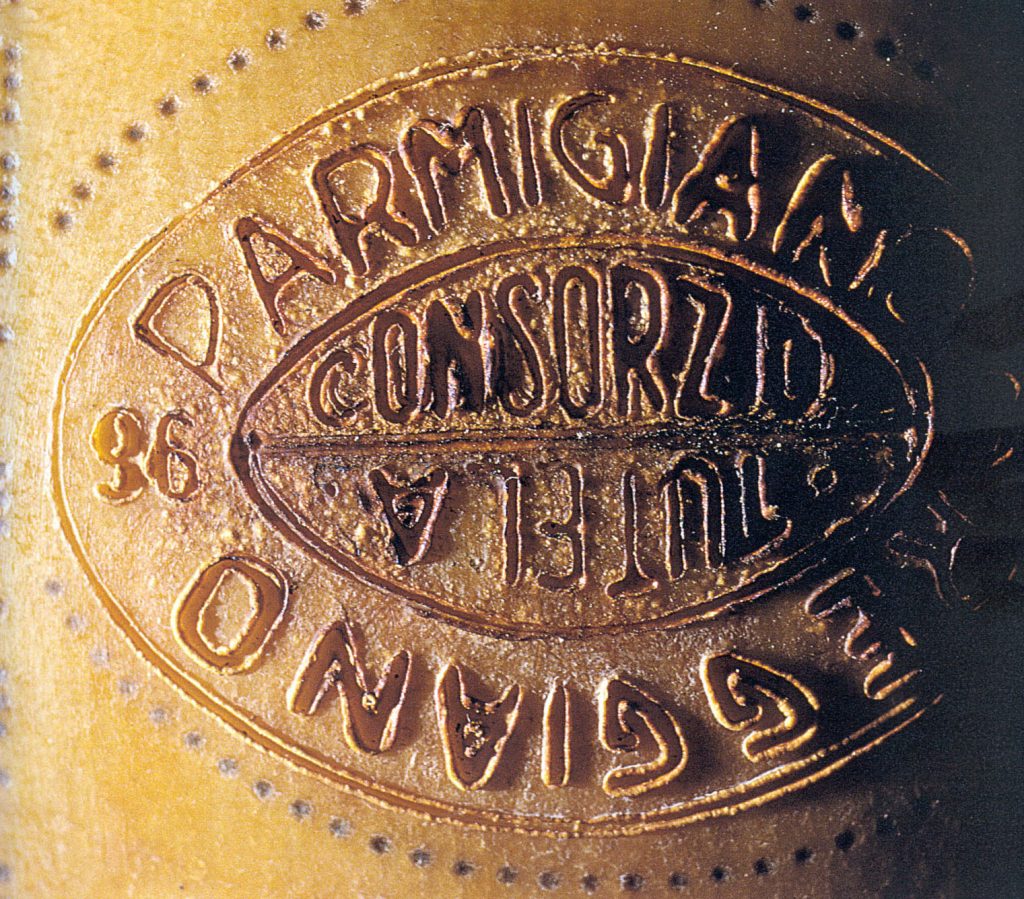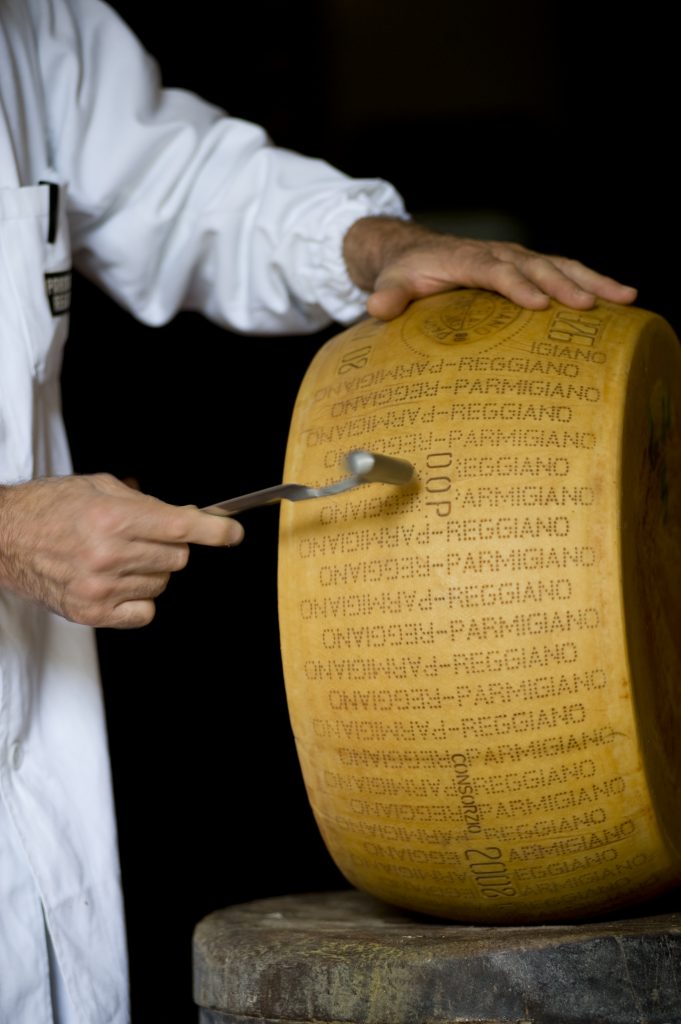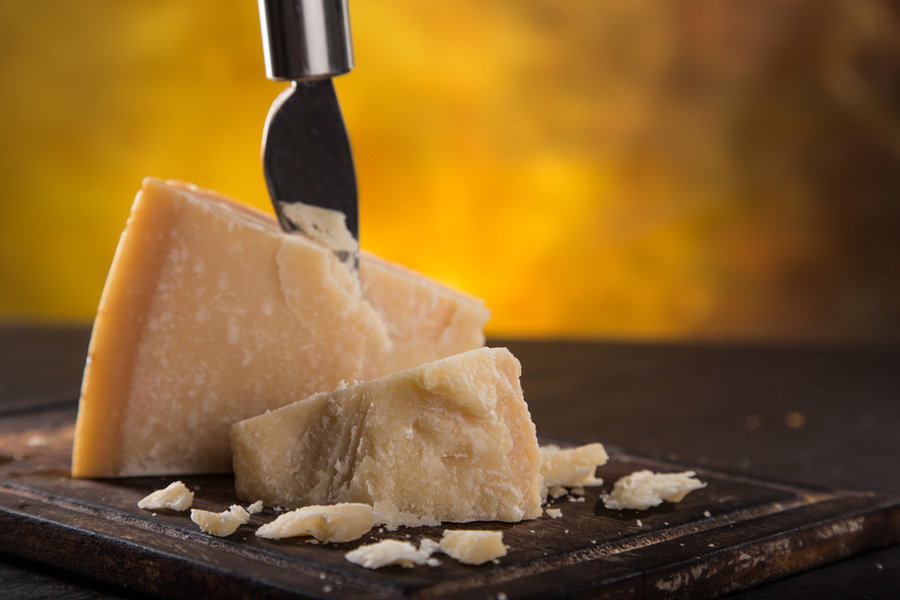Known worldwide as the “King of Cheeses” Parmigiano Reggiano is recommended as an important element of our daily diet. It is one of the few foods all naturally made, without any additives! Only milk, rennet and a little salt. It is a highly concentrated cheese and contains only 30% water and 70% nutrients. It is extremely rich in protein, vitamins and minerals. It is completely natural and easily digestible. As an incredibly nutritious cheese it is often recommended for babies, children, the elderly and also athletes!
Here’s our Q&A to help you get the most out of this most regal of cheeses.
1. What’s the best way to store Parmigiano Reggiano when it’s been freshly cut or unwrapped from a vacuum pack?
Parmigiano Reggiano must be stored in the fridge at a temperature ranging from 4 to 8°C. Its organoleptic features will remain unchanged if stored:
- … at an optimal humidity level – you must prevent it, as much as you can, from being in contact with air, which would make the external part too dry and hard and may lead to mould formation on the outside (especially with less mature cheese)
- … far from other food (the fatty part of cheese tends to absorb other smells present in the refrigerator)
- … in a glass or plastic container or wrapped in food-grade cling film.
2. If stored correctly, how long does Parmigiano keep for in the fridge?
If vacuum-packed Parmigiano Reggiano can be stored in the refrigerator for several months.
Once open, the instructions and suggestions on how long to keep Parmigiano Reggiano vary depending on how long it has been aged for:
12 – 18 Months
Parmigiano Reggiano with a maturation of 12-18 months and a higher moisture content can be kept for about 15 days.
24+ Months
Parmigiano Reggiano with a maturation of 24 months or more can be kept for about 1 month.

3. Should I throw it away if some mould appears?
If some mould develops on the surface you can remove it using a knife. The cheese underneath is normally fine to eat.

4. What are the white spots that you can sometimes see in Parmigiano Reggiano?
These are crystals of an amino-acid, ‘tyrosine’, which, owing to its molecular structure, crystallises when present in high concentrations. This amino-acid piles up during maturation because it is freed, along with the other amino-acids, through the breaking up of milk proteins by enzymes. Therefore, finding tyrosine crystals is good evidence of Parmigiano Reggiano maturation for consumers, because they increase in number and size with longer maturation.

5. I am lactose intolerant, can I eat Parmigiano Reggiano?
Yes, you can! In Parmigiano Reggiano, as early as in the first 48 hours after being made, all lactose is transformed into lactic acid: therefore, Parmigiano Reggiano is naturally lactose free, irrespective of maturation time.
6. Is the Parmigiano Reggiano rind edible?
Yes, it is! Parmigiano Reggiano rind can be eaten because this cheese does not contain any additives or preservatives and its rind does not undergo any preserving treatment. As it is formed during the natural dehydration of the external layer of cheese, the rind is completely natural. However, before using it, it is better to just give it a clean, in order to remove any impurities that may have come from the maturation environment.
It’s also great to cook with, add it to your home made soups and sauces to add extra flavour!

7. Can I freeze Parmigiano Reggiano?
Freezing Parmigiano Reggiano, especially in pieces, is not a good idea, because the structure of the cheese would change and lose its characteristic crumbliness.
8. What’s the difference between Grana Padano and Parmigiano Reggiano?
Firstly Grana Padana has a much wider production area. Taste-wise, Grana is softer and more buttery and generally more delicate than Parmigiano. Unlike Grana Padana, no preservatives are used in the production of Parmigiano.
We hope that we’ve answered some of your questions about the King of Cheeses but if there is something we have’t covered that you are curious about, please let us know!



